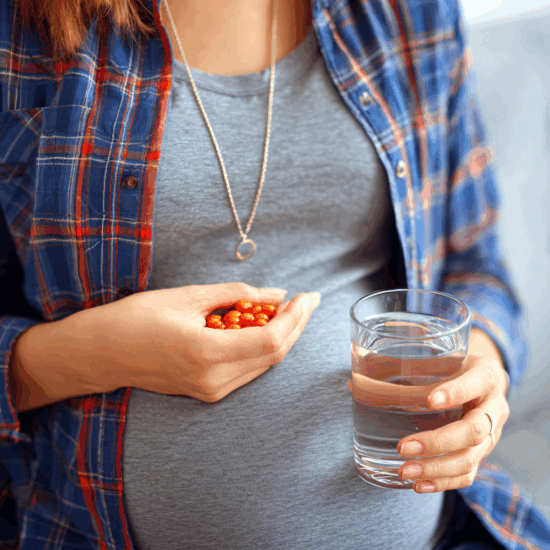Navigating IVDR: A Sponsor’s Guide to Clinical Performance Studies in the EU
Published Nov 14, 2025
Published 31st July 2024
Paediatric clinical trials play a crucial role in advancing healthcare for children by ensuring the safety and efficacy of treatments tailored to their unique needs. In the European Union (EU), regulations and initiatives are in place to encourage the development of medicines specifically for paediatric populations. However, these same regulations also come with their challenges. Here we are taking a look at what needs to be considered, in addition to an agreed Paediatric Investigational Plan (PIP), for paediatric development to ensure that you remain compliant with EU legislation.
In the EU, paediatric clinical trials are currently governed by the Paediatric Regulation. This regulation promotes the development of medicines for children by offering incentives and requiring the submission of paediatric investigation plans (PIPs) as part of marketing authorisation applications. The incentives include extensions of market exclusivity (patent protection) and the possibility of obtaining free scientific advice from the EMA on questions relating to the development of paediatric medicines. These incentives aim to balance the need for paediatric research with the challenges (obtaining informed consent, selecting appropriate endpoints, ensuring age-appropriate dosing [see our other recent blog post covering this topic]) and costs associated with conducting trials in children.
As well as the paediatric regulation, the Clinical Trials Regulation (CTR), which came into force on 31 January 2022, also outlines requirements for trials involving minors conducted in the EU, within Article 32.
Article 32(1) lists the conditions that have to be met with these trials, and while a lot of these conditions are standard, some need further consideration, such as the balance between the burden placed on the minor and the expected benefit to the minor (or the population represented by them). This is an important consideration for placebo-controlled studies which include minors.
“A clinical trial on minors may be conducted only where, in addition to the conditions set out in Article 28, all of the following conditions are met:……the clinical trial is intended to investigate treatments for a medical condition that only occurs in minors or the clinical trial is essential with respect to minors to validate data obtained in clinical trials on persons able to give informed consent or by other research methods”.
This requirement has the potential to create challenges for studies in any indication where adults are also impacted. This is of particular significance for diseases such as muscular dystrophies which, although present in adults, primarily impact paediatrics. This requirement, therefore, has the potential to slow down the development of medicines in this area. It is also often that trials in paediatrics for these types of indications show great potential treatment effects, whereas the same effect in adults is not always seen due to the benefit of treatment in the early stages of these diseases.
As this is still an ongoing challenge for paediatric studies in the EU, Sponsors need to consider the impact of including paediatrics in their clinical trial submissions in the EU, which may now face rejection if their use is not justified in line with Article 32. Under the CTR, when questions are received during a submission, applicants are given a strict 12-day timeline to respond and therefore, meeting this justification requirement can be incredibly difficult. Sponsors can choose to proceed with the study with adults only before adding paediatrics down the line. However, this means a huge delay to the paediatric population in an area of high unmet medical need where the study is part of an approved PIP.
DLRC has shared the concerns surrounding Article 32 (1)(e) with the Clinical Trial Coordination Group (CTCG) and has the expertise to be able to support Sponsors with tackling the challenges with Article 32.
The new working methods under the CTR, where one RMS represents all countries and collaboration is required across multiple nations, are still in the early stages of implementation. As direct discussions between regulators and Sponsors are currently avoided, it is evident that these interactions will eventually become essential for the development of certain trials under the CTR.
Since the implementation of the CTR, the European Medicines Agency (EMA) makes information on all clinical studies including paediatric studies available on a public interface. This is completed automatically when a Sponsor submits a clinical study in the EU via Clinical Trials Information System (CTIS).
A key aspect to consider for Sponsors of studies around the world, is the disclosure of study results and protocol-related information. Since March 2011, the EMA has provided access to clinical trial data involving children (as well as adults) through the European Union Clinical Trials Register. This register draws its information from EudraCT, a comprehensive European database encompassing clinical trial data from across the European Economic Area (EEA).
To post this information, users need to be registered with EudraCT. At DLRC, we can support Sponsors, marketing-authorisation holders (MAH), and PIP addressees to register and upload into these EU systems.
Results posting for interventional clinical trials in children (or adults) included in an agreed PIP must be posted directly to the EudraCT database. This includes trials that are conducted outside of the EU (i.e. the protocol-related information is not already registered in EudraCT). In these cases, prior upload of protocol-related information is also legally required.
The protocol-related information for paediatric trials conducted with at least one site in a third country and included in an agreed PIP, must be entered no later than one month after either, the EMA decision agreeing a PIP, or, the first approval/positive opinion of the trial by a third country competent authority and/or third country ethics committee, whichever is the latest. The information that has to be posted is outlined in the ‘Guidance on the information concerning paediatric clinical trials to be entered into the EU Database on Clinical Trials (EudraCT) and on the information to be made public by the European Medicines Agency (EMEA), in accordance with Article 41 of Regulation (EC) No 1901/2006’.
The result-related information for these paediatric trials must then be submitted to the EMA for entry into EudraCT no later than six months after the trial ends (as specified in the study protocol), regardless of whether it was completed or prematurely terminated. This means that for submitting result-related information to EudraCT, open trial extensions, such as those for maintenance treatment, are not considered part of the trial. The guidance linked above outlines the result-related information that must be submitted.
Article 46 of the Paediatric Regulation requires studies conducted in children (or both adults and children) sponsored by an MAH and involving the use of a medicine with a marketing authorisation, to be submitted. This applies to studies whether or not they are conducted in compliance with an agreed PIP. Article 46 applies to all authorised medicinal products without exception, irrespective of the route of authorisation.
Result-related information from clinical trials covered by Article 46 must be posted directly to the EudraCT database using the complete EudraCT data set. If protocol-related information is not already in EudraCT (e.g., for trials conducted outside the EU), a protocol file must be uploaded to EudraCT along with the result-related information to provide the necessary trial results. The required information to be submitted to the Rapporteur and to each competent Authority where the product is authorised (and to other Member States upon request) is outlined in the CMDh guidance.
The MAH should submit the paediatric studies within six months of completion (as defined in the study protocol), regardless of whether they are part of a PIP (completed or not) or intended for later submission as part of a variation, extension, or new stand-alone marketing authorization application.
The Article 46 assessment outcome aims to update authorisations with information on the use of the product in the paediatric population for the benefit of health care professionals and patients (or parents). These outcomes determine the recommended changes to the SmPC, and these are further defined in the CMDh guidance. If the assessment result does require changes to the SmPC/PL, the MAH is required to submit a variation within 30 days after the procedure is finalised.
In summary, the regulations in the EU for studies involving paediatrics, despite being valuable to the ethical conduct of such trials, also have the potential to cause delays in the development of medicines that can greatly impact minors. With the ‘black and white’ nature of the CTR, and the strict 12-day timeline to respond to RFIs, Sponsors are limited, and often the only way to enable a study to go ahead at all is to remove the paediatrics from their trials. In order to avoid this, as our experience conducting trials under the CTR grows, Sponsors and Regulators will need to work closer together, and have discussions around these more nuanced cases to ensure that, ultimately, the patients best interest is always at the forefront of decisions.
Also, other considerations when conducting trials in minors, such as when it comes to posting results, must be regarded. DLRC brings extensive expertise in paediatric clinical trials, especially regarding the intricacies of EU regulations, and is well-equipped to assist Sponsors with their trials in the EU.
Speak to our regulatory experts today, email our team at hello@dlrcgroup.com, or use the link below.

Published Nov 14, 2025

Published Oct 20, 2025

Published Oct 01, 2025

Published Oct 01, 2025

Published Oct 01, 2025

Published Oct 01, 2025

Published Oct 01, 2025

Published Sep 29, 2025

Published Sep 08, 2025